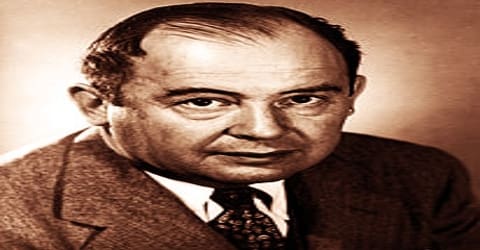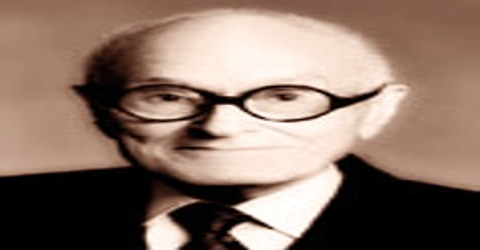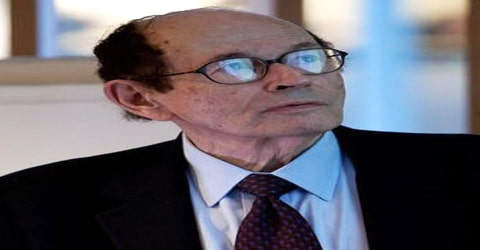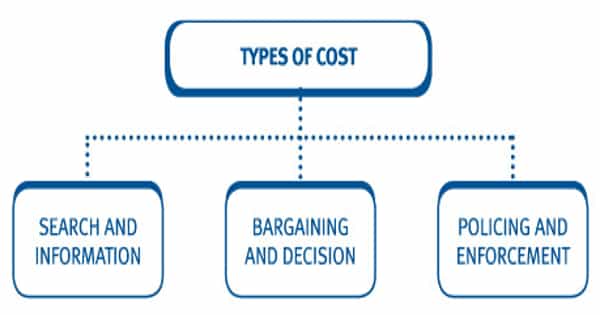Biography of John von Neumann
John von Neumann – Hungarian-American mathematician, physicist, computer scientist, and polymath.
Name: John von Neumann
Date of Birth: December 28, 1903
Place of Birth: Budapest, Austria-Hungary
Date of Death: February 8, 1957 (aged 53)
Place of Death: Washington, D.C., U.S.
Occupation: Mathematician, Physicist, Computer scientist
Father: Neumann Miksa
Mother: Kann Margit
Spouse/Ex: Mariette Kövesi (m. 1930-1937), Klara Dan von Neumann (m. 1938-1957)
Children: Marina Von Neumann Whitman
Early Life
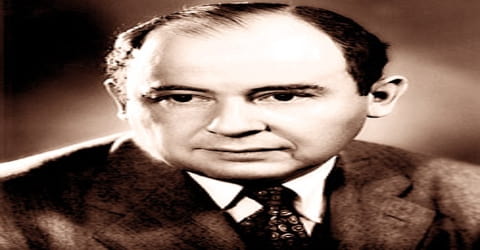
A Hungarian-born American mathematician, John von Neumann was born on December 28, 1903, in Budapest, Austria-Hungary Neumann János Lajos to a wealthy, acculturated and non-observant Jewish family (in Hungarian the family name comes first. He was a polymath and pioneer of the application of operator theory to quantum mechanics, in the development of functional analysis. Along with fellow physicists Edward Teller and Stanislaw Ulam, von Neumann worked out key steps in the nuclear physics involving thermonuclear reactions and the hydrogen bomb.
Von Neumann made major contributions to a number of fields, including mathematics (foundations of mathematics, functional analysis, ergodic theory, representation theory, operator algebras, geometry, topology, and numerical analysis), physics (quantum mechanics, hydrodynamics, and quantum statistical mechanics), economics (game theory), computing (Von Neumann architecture, linear programming, self-replicating machines, stochastic computing), and statistics.
Born in Budapest into a Jewish family, Von Neumann shifted to the USA before the rise of Nazi power. There he started teaching mathematics at Princeton University but was not successful as a professor mainly because his students found it hard to keep up with his speed. Later, as he joined a non-teaching position at the Institute of Advanced Study which closely collaborates with Princeton University, he began to flourish truly. Although he began his career as a pure mathematician, he later became more interested in applied mathematics, and as the Second World War broke out, he used his knowledge to contribute to war efforts. Throughout his life, he had published over 150 papers. Among them, sixty were in pure mathematics; another sixty in applied mathematics; twenty in physics and the rest were on miscellaneous subjects. He was a prolific writer and his last book, written from a hospital bed, was published posthumously as ‘The Computer and the Brain’.
Childhood, Family and Educational Life

John von Neumann, original name János Neumann (/vɒn ˈnɔɪmən/; Hungarian: Neumann János Lajos, pronounced ˈnɒjmɒn ˈjaːnoʃ ˈlɒjoʃ), was born on December 28, 1903, into an affluent family in Budapest. His father, Miksa Neumann, was a banker. His mother, Kann Margit, came from a prosperous merchant family. He had two younger brothers, Michael and Nicholas. Born a child prodigy, he could mentally divide and multiply multi-digit numbers from the age of six and became familiar with differential and integral calculus by the age of eight. Besides, he received lessons in Hungarian, English, French, German and Italian while studying at home under a governess.
In 1911, János Neumann was admitted to Fasori Evangélikus Gimnázium. Here his mathematical talent was quickly spotted by his teacher. Since his father insisted that he studied in grades appropriate to his age, additional especial tuitions were arranged for him to train him in fields in which he displayed an aptitude. Neumann completed his education at the gymnasium in 1921. Although he wanted to study mathematics his father convinced him to study chemical engineering because it had better prospects. With that aim, he enrolled at the University of Berlin in 1921 for a two-year course in chemistry. Simultaneously, he also enrolled at the University of Budapest with mathematics; but did not attend the classes there. Sometimes now, he published two major mathematical papers. The first paper, written jointly with Fekete, an assistant professor at the University of Budapest who had been tutoring him, was published in 1922. His second paper was published in 1923. In it, he provided the definition of ordinal number, which is still in use.
János Neumann initially studied chemistry and mathematics at the University of Berlin until 1923 when he went to Zurich, Switzerland where he received a degree in chemical engineering in 1926. The following year he received his doctorate in mathematics from Pázmány Peter University in Budapest at the age of just 22 with a thesis concerning axiomatization of Cantor’s set theory. Neumann then went to the University of Göttingen on a grant from the Rockefeller Foundation to study mathematics under David Hilbert. On December 13, 1927, he completed his habilitation. By then he had published twelve major papers in mathematics.
Personal Life
On New Year’s Day in 1930, John von Neumann married Marietta Kövesi, who had studied economics at Budapest University. Von Neumann and Marietta had one child, a daughter, Marina, born in 1935. As of 2017, she is a distinguished professor of business administration and public policy at the University of Michigan. The couple divorced in 1937.
In October 1938, John von Neumann married Klara Dan, a scientist, and a pioneering computer programmer. The couple did not have any children. They remained married until his death in 1957.
Prior to his marriage to Marietta, John von Neumann has baptized a Catholic in 1930. Von Neumann’s father, Max, had died in 1929. None of the family had converted to Christianity while Max was alive, but all did afterward.
Career and Works
John Von Neumann took positions as a Privatdozent (“private lecturer”) at the Universities of Berlin (1927-29) and Hamburg (1929-30). He published ‘Zur Theorie der Gesellschaftsspiele’ (On the Theory of Parlor Games), an important paper in the field of game theory. The work with Hilbert culminated in von Neumann’s book The Mathematical Foundations of Quantum Mechanics (1932), in which quantum states are treated as vectors in a Hilbert space. This mathematical synthesis reconciled the seemingly contradictory quantum mechanical formulations of Erwin Schrödinger and Werner Heisenberg. Von Neumann also claimed to prove that deterministic “hidden variables” cannot underlie quantum phenomena. This influential result pleased Niels Bohr and Heisenberg and played a strong role in convincing physicists to accept the indeterminacy of quantum theory. In contrast, the result dismayed Albert Einstein, who refused to abandon his belief in determinism.
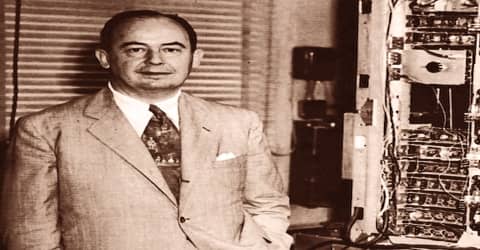
In 1930, Neumann became a visiting lecturer at Princeton University. Sometimes now, he started working on the theory of rings of operators with the aim of developing a mathematical technique suitable for a quantum phenomenon. The work took almost a decade to finish and is now known as ‘von Neumann algebras’. In 1931, he was appointed a full professor. He now began to write a series of articles in which he made foundational contributions to quasi ergodic theory. However, as a professor of mathematics, he was not very popular with the students. This was because they could not keep up with him and found it hard to follow his fluid lines of thought. He wrote too quickly and rubbed it off before his students could copy it. Contrarily, he was able to convey the complicated ideas in physics much more easily. After a talk, his students always returned with the feeling that the problem was actually very simple.
By his mid-twenties, Von Neumann found himself pointed out as a wunderkind at conferences. He claimed that mathematical powers start to decline at age 26, after which experience can conceal the deterioration for a time. Von Neumann produced a staggering succession of pivotal papers in logic, set theory, group theory, ergodic theory, and operator theory. Herman Goldstine and Eugene Wigner noted that, of all the principal branches of mathematics, it was only in topology and number theory that von Neumann failed to make an important contribution.
In 1933 he became a mathematics professor at the Institute for Advanced Study in Princeton, New Jersey and he kept this position until his death. His mother, brothers, and in-laws followed von Neumann to the United States in 1939. Von Neumann anglicized his first name to John, keeping the German-aristocratic surname of von Neumann. His brothers changed theirs to “Neumann” and “VonNeumann”.
In 1935, Von Neumann became co-editor of ‘Compositio Mathematica.’ Concurrently, he also functioned as the co-editor of Annals of Mathematics and held both these positions until his death. In 1937, Neumann became a naturalized citizen of the US after migrating to America with his mother and brothers. In 1938, von Neumann was awarded the Bôcher Memorial Prize for his work in analysis.
Motivated by a continuing desire to develop mathematical techniques suited to quantum phenomena, von Neumann introduced a theory of rings of operators, now known as von Neumann algebras (1929 through the 1940s). Other achievements include a proof of the quasi-ergodic hypothesis (1932) and important work in lattice theory (1935-37). It was not only the new physics that commanded von Neumann’s attention. A 1932 Princeton lecture, “On Certain Equations of Economics and a Generalization of Brouwer’s Fixed Point Theorem” (published 1937), was a seminal contribution to linear and nonlinear programming in economics. “Almost Periodic Functions and Groups” (1934-35) was awarded the American Mathematical Society’s Bôcher Prize in 1938.
From 1937 to 1939, von Neumann concentrated on the Lattice Theory, in which he provided an abstract exploration of dimension in complemented modular topological lattices and later founded the field of continuous geometry based on it. During the Second World War, he worked on the Manhattan Project to produce the first atomic bomb. Following the war, Neumann became a consultant to the American government and industry in addition to his professorship at Princeton. By late the 1930s, von Neumann had developed an expertise in explosions and became known as the leading authority of the mathematics of shaped charges. Later as the Second World War set in, he decided to join the United States Army but was rejected because of his age. Instead, because of his expertise in the mathematics of shaped charges, he was invited to work as a consultant in a number of military projects.
In late 1943 John von Neumann began work on the Manhattan Project at the invitation of J. Robert Oppenheimer. Von Neumann was an expert in the nonlinear physics of hydrodynamics and shock waves, an expertise that he had already applied to chemical explosives in the British war effort. At Los Alamos, New Mexico, von Neumann worked on Seth Neddermeyer’s implosion design for an atomic bomb. This called for a hollow sphere containing fissionable plutonium to be symmetrically imploded in order to drive the plutonium into a critical mass at the center. The implosion had to be so symmetrical that it was compared to crushing a beer can without splattering any beer. Adapting an idea proposed by James Tuck, von Neumann calculated that a “lens” of faster- and slower-burning chemical explosives could achieve the needed degree of symmetry. The Fat Man atomic bomb dropped on the Japanese port of Nagasaki, used this design. Von Neumann participated in the selection of a Japanese target, arguing against bombing the Imperial Palace, Tokyo.
An astoundingly creative mathematician, John von Neumann has played an important role in post-war economic theory. He published “Theory of Games and Economic Behavior” in 1944 which detailed a groundbreaking mathematical theory of economic and social organization, based on a theory of games of strategy. Throughout his life, von Neumann had a respect and admiration for business and government leaders; something which was often at variance with the inclinations of his scientific colleagues.
In the post-war period, Von Neumann began to work as a consultant both to the government and the industry. In fact, he started this work even before the end of the War. In 1944, for example, he worked with the U.S. Army contributing important ideas to the development of the hard-wired ENIAC computer. Later, he worked as a consultant to the RAND Corporation, a think tank charged with planning a nuclear strategy for the U.S. Air Force. In this capacity, he supported the building of hydrogen bombs. Around 1950, he also advocated a nuclear strike to destroy the Soviet Union’s nuclear capability.
In 1950, von Neumann became a consultant to the Weapons Systems Evaluation Group (WSEG), whose function was to advise the Joint Chiefs of Staff and the United States Secretary of Defense on the development and use of new technologies. He also became an adviser to the Armed Forces Special Weapons Project (AFSWP), which was responsible for the military aspects of nuclear weapons. Over the following two years, he became a consultant to the Central Intelligence Agency (CIA), a member of the influential General Advisory Committee of the Atomic Energy Commission, a consultant to the newly established Lawrence Livermore National Laboratory, and a member of the Scientific Advisory Group of the United States Air Force.
In 1954, Von Neumann was elected a member of the Atomic Energy Commission. He served in that capacity till 1956. During this period, he worked to develop the policy of nuclear deterrence for President Dwight D. Eisenhower’s administration.
In his last years, John von Neumann puzzled over the question of whether a machine could reproduce itself. Using an abstract model (cellular automata), von Neumann outlined how a machine could reproduce itself from simple components. Key to this demonstration is that the machine reads its own “genetic” code, interpreting it first as instructions for constructing the machine exclusive of the code and second as data. In the second phase, the machine copies its code in order to create a completely “fertile” new machine. Conceptually, this work anticipated later discoveries in genetics.
Awards and Honor
John von Neumann had received several awards; among them, Bôcher Memorial Prize (1938), Navy Distinguished Civilian Service Award (1946), Medal for Merit (1946), Medal of Freedom (1956) and Enrico Fermi Award (1956) are the most significant.
In 2005, Von Neumann was depicted on 37-cent self-adhesive US postage stamp, issued by United States Postal Service.
Death and Legacy

John Von Neumann was diagnosed with bone cancer in 1955. He continued to work even as his health deteriorated rapidly. In 1956 he received the Enrico Fermi Award. A lifelong agnostic, shortly before his death he converted to Roman Catholicism. He died at age 53 on February 8, 1957, at the Walter Reed Army Medical Center in Washington, D.C., under military security lest he reveals military secrets while heavily medicated. He was buried at Princeton Cemetery in Princeton, Mercer County, New Jersey.
Von Neumann was the founder of many theories such as the Ergodic Theory, the Operator Theory, the Lattice Theory, Game Theory, and the Measure Theory as well as a branch of geometry known as continuous geometry and the Von Neumann Algebras. ‘Theory of Games and Economic Behavior’, which Neumann had co-authored with economist Oskar Morgenstern, is, however, his most significant work. The book, published in 1944, created the interdisciplinary research field of game theory. The work was based on Neumann’s 1928 research work, ‘On the Theory of Parlor Games’.
Von Neumann grew from child prodigy to one of the world’s foremost mathematicians by his mid-twenties. Important work in set theory inaugurated a career that touched nearly every major branch of mathematics. Von Neumann’s gift for applied mathematics took his work in directions that influenced quantum theory, automata theory, economics, and defense planning. Von Neumann pioneered game theory and, along with Alan Turing and Claude Shannon, was one of the conceptual inventors of the stored-program digital computer.
Apart from numerous mathematical formulas named after von Neumann, his legacy is being carried forward by a number of awards and lectures instituted in his honor. A lunar impact crater that lies on the far side of the Moon, in the northern hemisphere, has also been named Von Neumann after him. Unlike most mathematicians, von Neumann worked better under chaotic conditions in living rooms and such places rather than in his study, which was rather secluded. He liked to socialize a lot and entertained regularly at home.
Information Source:
